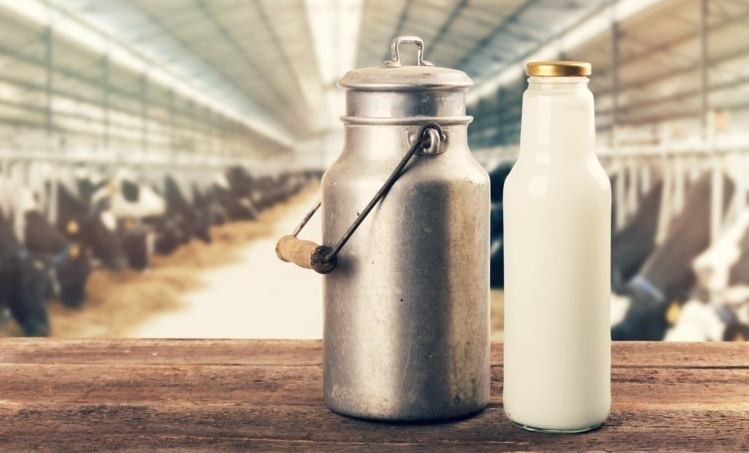Veterinary Drugs are used in livestock either rationally or irrationally for various purposes like therapeutic, prophylactic, and growth promotion. Rational use of drugs is based on the use of right drug, at right dosage, right cost and right time which is well reflected in the world health organization (WHO) whereas irrational use of drugs is defined as “too many medicines prescribed per patient, antimicrobials prescribed in inadequate doses or duration and sometimes for non-bacterial infections, prescriptions do not follow clinical guidelines or do not adhere to prescribed treatment” (WHO, 2012). Thus a possibility arises that some quantities of drugs or their metabolites (residues) may remain in edible tissues or in animal products (meat, milk, eggs) causing deleterious effects in humans as potential consumers of such food.
To avoid or reduce this risk it is essential to use drugs rationally, i.e., to use them only when they are really indicated, in the right way, at the right time, in the right dose and following withdrawal period or withholding period. Moreover, due attention should be paid to sensitivity of antimicrobials agents to regulate residues of antimicrobials routinely used in veterinary practice. Rational approach to therapeutics involves vigilant evaluation of the health problem in animals and selecting suitable therapeutic strategies. Selection of treatment requires cost/benefit analysis particularly in food animals. Its efficacy, safety with minimal harmful effects and minimal residues in food animals also requires prompt attention.
Over use of antimicrobials and anthelmintics in veterinary medicine, for food producing and companion animals lead to the development of antimicrobial and anthelmintic resistance. The drug resistance is a growing menace and some of the reasons contributing to the emergence of antimicrobial resistance are the superfluous and unnecessary usage of antimicrobial drugs, inappropriate dose, inadequate duration of therapy, use of irrational antimicrobials fixed dose drug combinations. In humans, assessments of drug use patterns with the WHO drug use indicators are becoming important to promote rational drug use.
The spread of multiple drug resistant (MDR) pathogenic bacteria has been recognized by the World Health Organization for Animal Health (OIE), the Food and Agriculture Organization (FAO) and the World Health Organization (WHO) as a serious and emerging global human and animal health problem. The development of antimicrobial resistance is neither an unexpected nor a novel problem. It is, however, becoming alarming due to the frequency with which new emerging resistant phenotypes are developing among many bacterial pathogens and even commensal organisms. Historically, many infections could be successfully treated according to the clinician’s past experience; nevertheless it is becoming more the exception than the rule). Clinicians need to be more reliable on data from in-vitro antimicrobial susceptibility testing and emphasize the importance of the diagnostic laboratory in veterinary practice. Many antimicrobial susceptibility testing (AST) methods are available to evaluate the bacterial susceptibility to antimicrobials. The selection of a method depends on many factors such as practicality, flexibility, cost, reproducibility, accuracy and individual choice.
Usage of antimicrobials in the past has increased manifold that many feel today’s intensive agricultural production will not be possible in their absence. The spectrum of veterinary drugs used in food animals is extremely broad, ranging from teat dips to hormones. Approximately 19% of all veterinary pharmaceuticals used worldwide include anti-infectives (e.g., antibacterials, antifungals and antivirals), 13% as parasiticides, 11% are used as biologicals and 15% represent other drugs.
The commonly used antimicrobials in food animals can be grouped into five major groups. These include the beta-lactams (β-lactams; e.g., penicillins and cephalosporins), tetracyclines (e.g., oxytetracycline, tetracycline and chlortetracycline), aminoglycosides (e.g., streptomycin, neomycin and gentamicin), macrolides (e.g. erythromycin) and sulfonamides (e.g., sulfamethazine). A survey of veterinarians in the United States showed that antibiotics were most often prescribed in the cure of lactating dairy cows, mainly for mastitis therapy. Penicillin G was the most commonly used, and except for oxytetracycline the five most prescribed drugs were all β-lactams approved for use in lactating dairy cattle: penicillin G, ceftiofur sodium, cloxacillin, cephapirin and ampicillin.
Antimicrobials are prescribed to animals by injections (e.g., intramuscular, intravenous, subcutaneous), orally in the food and water, topically on the skin or by intramammary and intrauterine infusions. All these drugs may contribute to residues appearing in foods of animal origin such as milk, meat and eggs. It has been reported that approximately 12% of the U.S. milk supply was contaminated with β-lactam antibiotics prior to 1962. Likewise results have been reported in Britain in 1963 when 11% of milk samples tested were found to have penicillin.
Controversial studies conducted in 1988 involving more sensitive detection methods revealed that 75% of North American consumer milk had detectable levels of Tetracyclines, Sulphamethazine and other antibiotics. A survey conducted in 1969 on 5,000 samples of tissue, urine and faecal samples collected from swine, beef cattle, veal calves, lambs and poultry at the time of slaughter in Illinois revealed antibiotic residues in 27 %, 9 %, 17 %, 21 % and 20 %, respectively. From 1974 to 1977 the violative rate for SMZ in slaughtered swine in the United States was in the range of 10 and 13 %. However, present data reveals that 1 % of animal products in the United States and Europe contain antibiotic residues at very low levels.
Antibiotics may enter human body in different ways as directly or indirectly by using them as growth stimulants, disease prevention and treatment and adulteration in food animals products. Use of antibiotics in animals may cause antibiotic residues in foodstuffs such as milk, eggs and meat. These residues may be responsible for various toxic effects such as transfer of antibiotic resistant bacteria to humans, allergy, immunopathological effects, carcinogenicity (sulphamethazine, oxytetracycline, furazolidone), mutagenicity, nephropathy (gentamicin), hepatotoxicity, reproductive disorders, bone marrow toxicity (chloramphenicol) and even allergic shock in humans. In the developing world, multi-drug resistant (MDR) bacteria is becoming a serious problem in the cure of diseases. If not used judiciously, antimicrobials may have impact on human, animal and environmental health in a One Health context, as up to 90% of the antibiotic parent compounds can be directly excreted in milk and meat leading to antibiotic resistance development in the environment.
Besides, a 2015 study revealed that global agricultural antibiotic usage will increase by 67 % from 2010 to 2030, mainly from increase in use in developing BRIC countries. This is a matter of concern as antibiotic resistance is considered to be a serious threat to human and animals and growing levels of antibiotics or antibiotic-resistant bacteria in the environment could increase the numbers of drug-resistant infections. However, legislation and other restrictions on antibiotic usage in farm animals are now being introduced across the globe (OECD, Paris, 2019).
In 2017, World Health Organization strongly suggested reducing antibiotic use in animals used for food purposes. The occurrence of antimicrobial residues in foods of animal origin, together with failure to observe the instructions and precautions in their usage (dosage and waiting period) or poor livestock production practices can have deleterious consequences for consumer health. The regulations for veterinary drugs define a risk assessment protocol to assess their active ingredients and set maximum residue limits (MRLs). Indeed, sustainable livestock systems in developing countries must agree the demand for animal products without compromising people’s future nutritional needs or harming the environment.
The Origin of Residues in Meat and Milk
Intramammary infusions deliver high concentrations of antibiotics directly into the mammary gland, the majority of intramammary infusions contain penicillin or other beta-lactam antibiotics and many testing methods are particularly sensitive for this class of antibiotics, it is not astonishing that beta-lactam antibiotics are the most routinely detected residues in milk in most countries. Sulfa drugs are less commonly detected while tetracyclines, aminoglycosides, macrolides and other classes of antibiotics are hardly detected in milk.
While several factors have lead to the residue problem such as poor treatment records or inability to identify treated animals, most violations occur from the usage of a drug in some manner that does not comply with the labeling. This occurs basically through not observing withdrawal times as well as “extra-label” use of the drug. Treatments involving any other method than what is written on the product label (e.g., different species, increased dosage, different route of administration, different frequency of treatment) are recognized as extra-label usage, and withdrawal times are difficult or impossible to determine in these circumstances. Excessive usage of antibiotics has caused xenobiotic residue occurrence in milk and milk products including meat and due to this milk and other food products like meat adulterated with antibiotics beyond a safe level are deemed to be unfit for human use.
Concerns and Public Health Risks
Serious concern was expressed over public health hazards (e.g., allergenic), but this received minor attention. Thus, the impetus for surveillance of drug residues in foods came from the dairy industry itself. Many human and animal health concerns have been raised over the years with regard to injudicious use of antibiotics in agricultural production as well as occurrence of residues in the food chain. Such concerns involve the potential for allergic reactions in sensitized individuals (penicillins), toxicity such as aplasia of the bone marrow (chloramphenicol), effects on the human gut microbial populations, the emergence of resistant bacteria within animals and the transfer of antibiotic resistance genes to human pathogens.
In addition, some drugs like nitrofurans have been found to be animal carcinogens and mutagens in genotoxic tests. The validity of any public health threat caused by these concerns has been widely debated in the scientific community for over 40 years. A few cases of minor allergic reactions (e.g., skin rashes) in previously sensitized individuals to penicillin G residues in milk and meat have been recognized linking widespread agricultural use of antibiotics causing antibiotic resistance among animal and human pathogens. Nevertheless, the public health risks of drugs like antibiotics and anthelmintics and their metabolites in foods are difficult to define, and the occurence of violative levels of residues in foods is illegal and liable to financial penalties in many countries.
Antibiotic Use in Livestock in India
Currently, there is little accurate data available in India on antimicrobial usage in food animals or resistant infections linked to animals and its effect on public health. It is agreed though, that there is widespread use of antibiotics in food animals for prevention, treatment of infection as well as for growth promotion. A recent study assessing global use of antibiotics in poultry, swine and cattle in 2010 revealed that India accounts for 3% of global consumption and is among the top consumers worldwide, along with China, the United States, Brazil and Germany.
Estimates for 2030 indicate an overall increase of about two-thirds in animal antibiotic consumption worldwide. Their use in chickens, in particular, is expected to triple in India by 2030. The study revealed that globally penicillins, tetracyclines and quinolones are some of the most widely used antibiotics, with the use of these antibiotics higher in countries with meat-heavy diets.
The WHO’s list of Critically Important Antimicrobials is made up of antibiotics which are critically important for human health and their usage must be restricted in the veterinary sector. These include ampicillin, amoxycillin, cefadroxil, chlortetracycline, doxycycline, erythromycin, flumequine, gentamycin, vancomycin, oxytetracycline, spiramycin, sulfadiazine, sulfadimethoxine.
Recently a survey published in The Hindu on July, 29th, 2020, conducted by the Centre for Science and Environment (CSE) reported that antibiotics are extensively misused in dairy sector in India. The leading national newspaper also published that as per FSSAI survey 41 % milk samples are of poor quality, 7 % samples are even unfit to consume in India.
(The Author is Head Division of Clinical Veterinary Medicine, FVSc and A.H, Shuhama, SKUAST Kashmir> feedback: [email protected])








